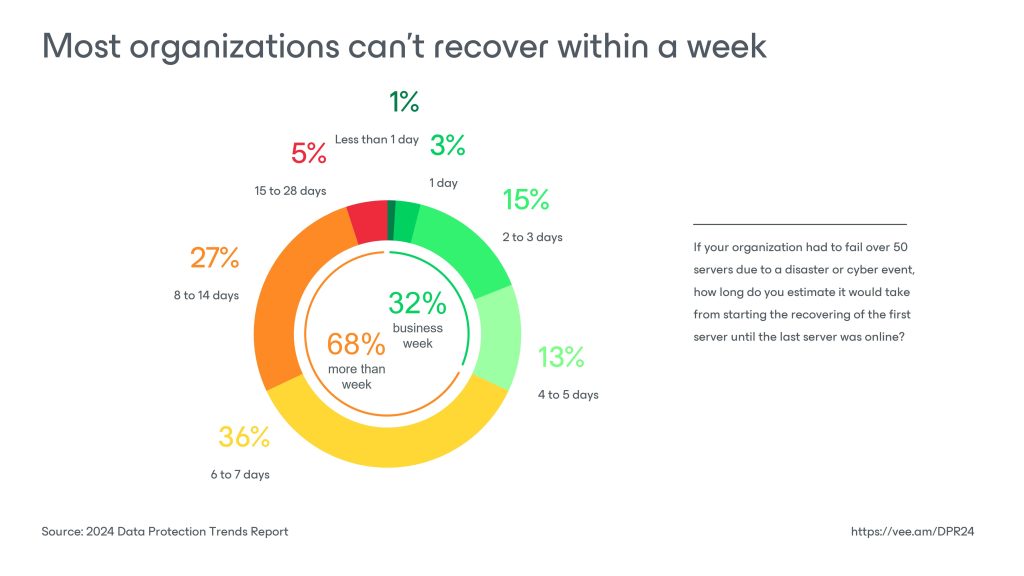Veeam Software released insights from the company’s fifth annual Veeam Data Protection Trends Report. While companies say they will spend more trying to fend off cyber-attacks, the survey found IT leaders are feeling even less protected and more concerned about their ability to recover and restore mission-critical data.
Respondents shared that cyber-attacks remain the top cause of outages and that while organisations are putting more emphasis on using the cloud for major recoveries, only a small percentage believe they will be able to recover from even a small crisis in under a week.
For the fourth straight year, cyber-attacks were listed as the most common and most impactful causes of business outages across organisations. The fact that other types of outages followed closely behind – infrastructure, networking, storage hardware, application software, public cloud resources, and server hardware – illustrated the growing need for modernised backup strategies.
The survey ranked protecting against cyber threats and addressing environmental, social, and governmental goals as the biggest inhibitors to IT modernisation and digital transformation initiatives. These factors scored higher than usual struggles related to skills, economic concerns and organisational issues, due to the amount of effort and resources that were being diverted from digital transformation or IT modernisation investments.
While most organisations consider cyber resiliency a foundational aspect of their broader business continuity or disaster recovery, BC, DR strategy, BC, DR preparedness is not yet passing most SLA expectations. When asked how long IT would need to recover 50 servers, only 32% believed their IT staffs could recover the servers within five business days.
Other supporting statistics reflect the growing gap between what data protection business units expect and what IT services can deliver is increasing. When asked about their latest large scale cyber, disaster test, less than 3 out of 5, 58% servers were recoverable within expectations.
Container usage continues to rise, with 59% of enterprises running them in production, and another 37% either rolling them out or planning to. Unfortunately, only 25% of organisations use a backup solution that is purpose-built for containers, while the rest of organisations back up only some of the underlying components.
Neither tactic ensures that the applications and services will be resumable after a crisis, or even a simple import, configuration error that needs to be undone.
The fact that 47% of respondents expressed an intent to seek a new job outside of their current organisation within the next twelve months represents both a challenge and an opportunity for data protection initiatives.
While losing valuable data protection talent puts organisations at a significant disadvantage when crises inevitably strike, the market shift presents an opportunity to add knowledge to protect modern production workloads that reside in clouds.
The report shows that the sophisticated cyber-threat landscape is impeding digital transformation initiatives that leadership teams are accountable for, and which are critical to the success of organisations today. Most organisations now consider cyber-resiliency, CR as a foundational aspect of their broader business continuity, disaster recovery, BC, DR strategy. Unfortunately, BC, DR preparedness is not yet passing most SLA expectations.
As organisations move workloads from one platform or cloud to another, IT teams are still relying on legacy backup solutions that do not offer equitable protection of cloud-hosted workloads. Here, increasing data protection budgets is only one part of the puzzle. The other part is investing budgets into data protection solutions that offer resilience through data security, data recovery, and data freedom purpose-built for today’s hybrid cloud demands.
Veeam commissioned the survey in late 2023 through an independent research firm. The report surveyed 1,200 unbiased IT leaders and implementors from all over the world and all sizes of organisations on a variety of data protection drivers, challenges, and strategies.
Source: Veeam Data Protection Trends Report









